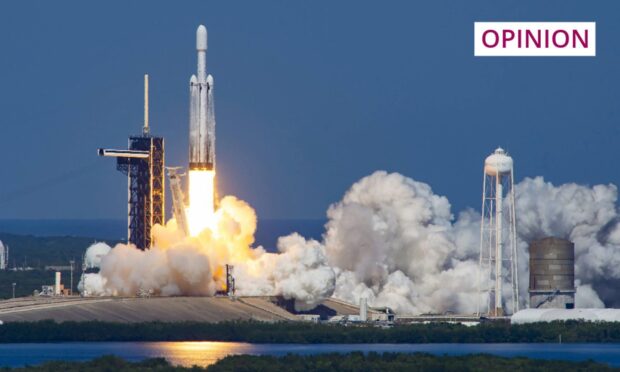Dundee’s reputation in science circles is taking off this week – literally.
I was so excited to see that parts designed, made and tested in Dundee were launched on Nasa’s latest mission to Europa, one of the moons of giant planet Jupiter, the other day.
Now they’re hurtling through space on the Europa Clipper, headed out on a 1.8 billion mile journey to look for evidence of water under the moon’s icy crust, which if found, could harbour life.
In other words, Nasa’s out looking for aliens in the space-sea, and the City of Discovery helped launch the ship.
As a space nerd and former physics student, the mission itself is just really cool.

Understanding more about the bodies in our solar system is only possible through technological advancement, so it’s like watching the progress of human knowledge in real time.
And having been raised on films like ET and Lilo and Stitch, I’ve always been of the view that having an alien buddy would be excellent.
So I’m all for finding out what weird and wonderful creatures are out there. Although if our own ocean is anything to go by, ice-ocean critters might be a bit freaky.
And we’d certainly have an admin headache around defining a ‘European’ passport.
But that’s a future problem.
A lot can change by 2030
It’s hoped the Clipper reaches Jupiter by 2030, which in space mission terms, is really not a long time. Voyager 1 was launched in 1977 and she’s still out surfing the cosmos.
But down here on Earth, a lot can change in five years.
Governments, wars, globe-engulfing viruses… they change the landscape of a place with just about every trip round the Sun.
It’s hard enough to see through plans from one administration to the next, never mind waiting too see something through to the literal Jupiter moon and back.
But the way I see it, Dundee has an opportunity here to become globally renowned for its contribution to space science and the space travel industry.
And make no mistake, that’s an industry which will only get bigger as the Elon Musks of the world gather others into their jet stream.
So it’s important that we use this time wisely.
Science is already one of the biggest industries in Dundee, but we don’t see the city associated with it. Yet.
There’s two likely reasons for this – one is that science often takes place behind closed doors. Smiths Interconnect, the manufacturer of the Europa Clipper parts, is tucked away at the Dunsinane Avenue Industrial Estate.
Meanwhile Dundee University’s Life Sciences building is a glass tower filled with a flurry of white coats. Inside, the Drug Discovery Unit is working relentlessly to get new and better medicines to patients.
Dundee: City of jam, journalism and Jupiter?
The other reason is that science moves in lifetimes, not terms.
The Europa Clipper parts were shipped out of Dundee 18 months ago, and only now are they on their mission.
At the DDU, it can take 15 years for a drug to go from the research lab to the hands of a patient.
So slow is the pace of progress that it can be hard for Dundonians to see the impact that their city’s science sector is having on their day-to-day lives.
But we must make it a priority in our minds, and give it our attention, because we have a chance to make Dundee the go-to place for working scientists.
And to do that, we need to keep the jobs and the companies (and the money) here.
That means shouting about all the amazing scientific work that’s already going on in the city, and having our officials celebrate it too, so that the whole world knows Dundee is where it’s at if you’re a geek with a dream.
By the time the Clipper completes its mission, Dundee will be five years further on.
By then, the Eden Project may be opening. We may have fleets of electric vehicles on our roads, as our city is currently blazing a trail in the world of sustainable transport.
It’s hard to know right now what that city will look like.
But we don’t have jute factories anymore. So maybe the future three ‘J’s of Dundee are jam, journalism and Jupiter?














Conversation